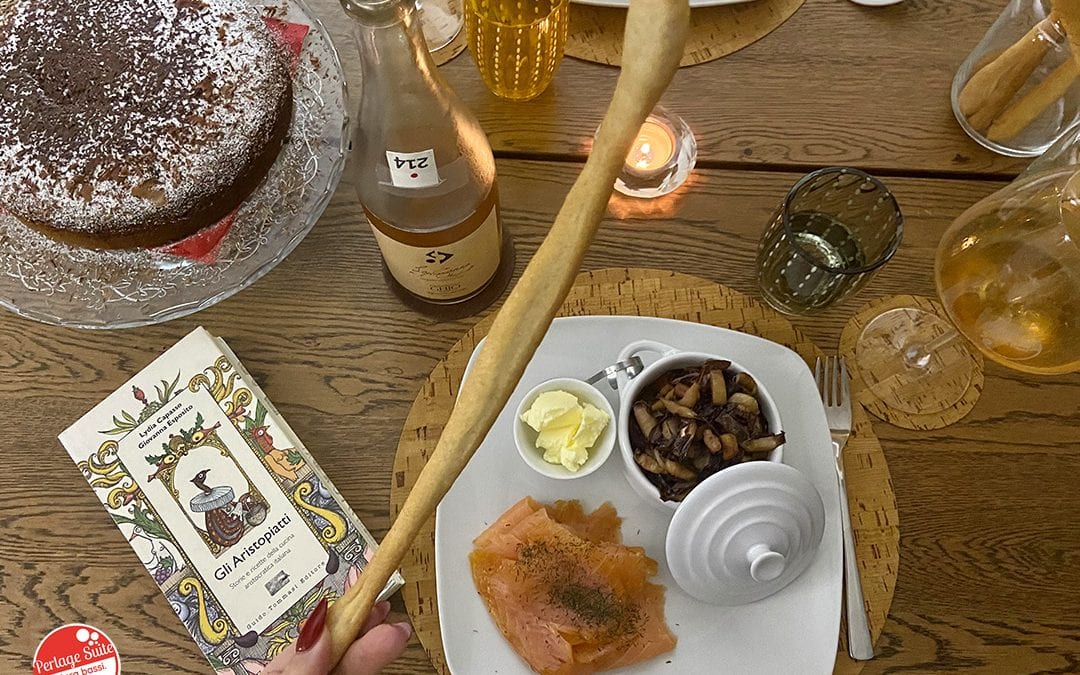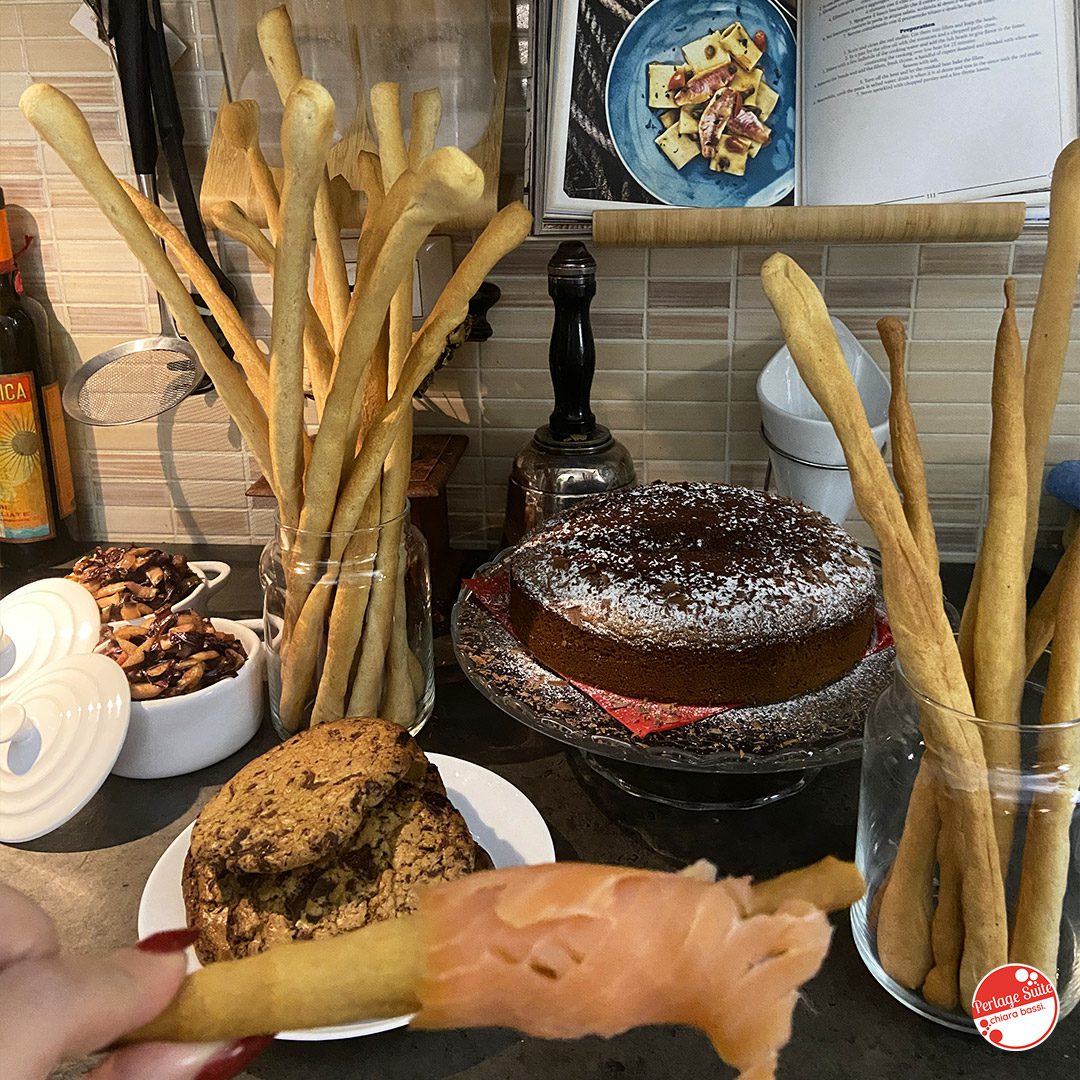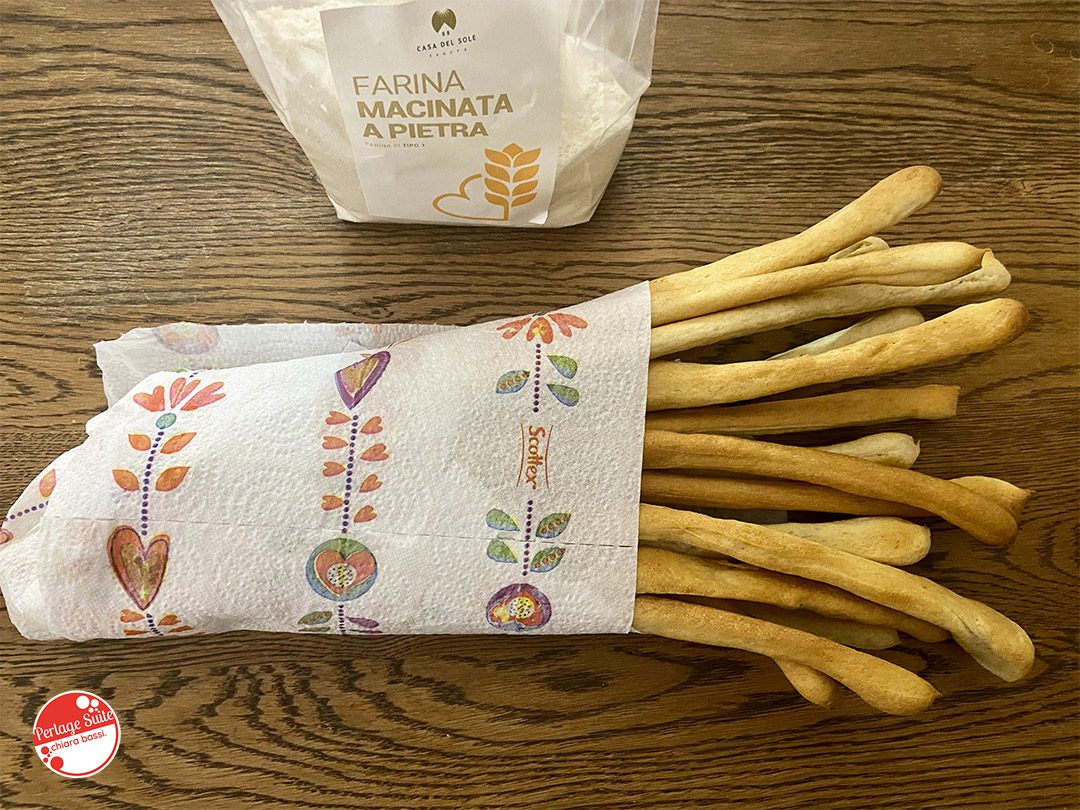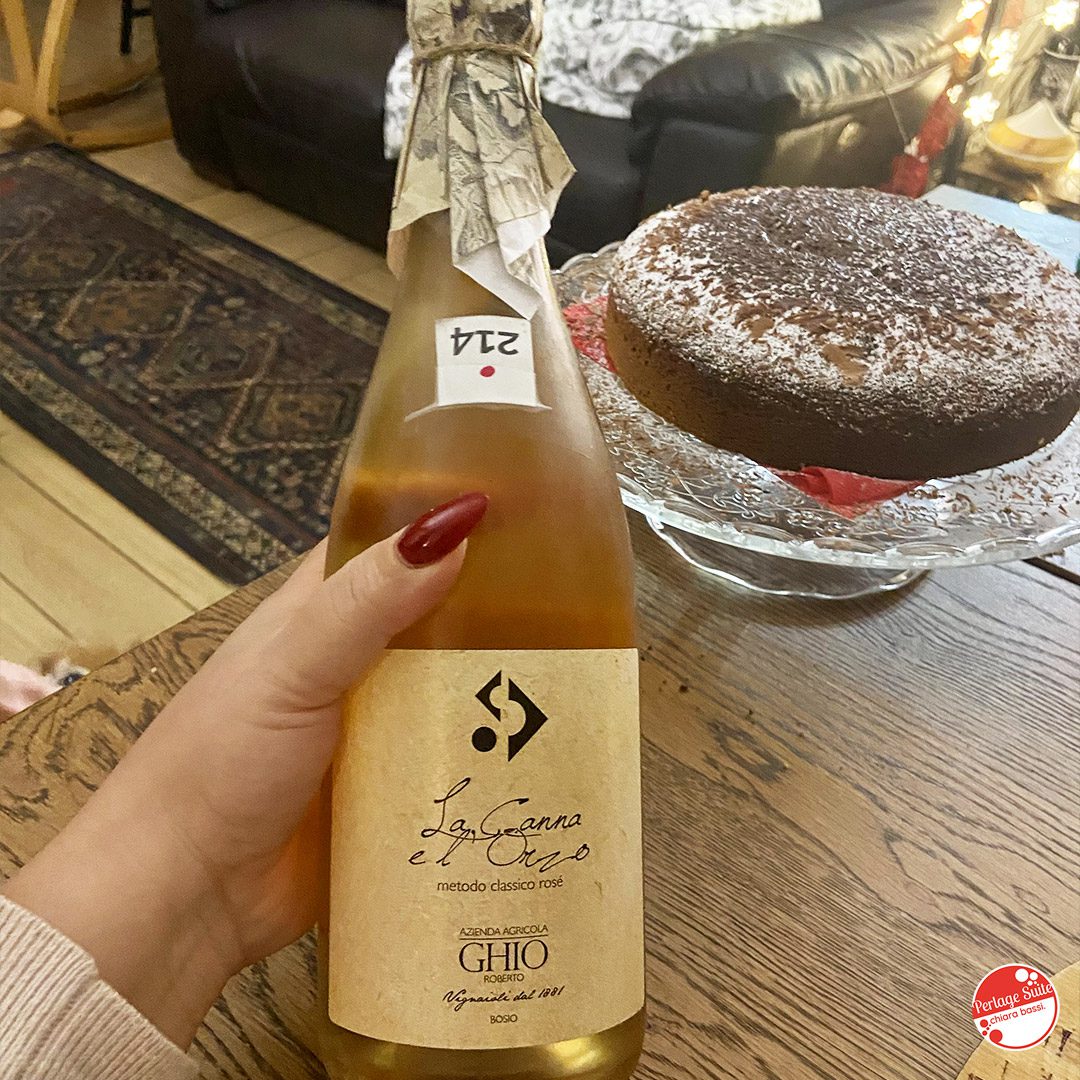When I hear the postman ring the bell and have the knowledge that I am expecting a fabulous parcel from Amazon, I am happy as a child. My favourite subject in school was History... of anything! History, History of Art, History of Architecture, History of Computer Science... all my university 30s went into these subjects. And when I started taking History of Food and Wine classes, I was moved! But how fascinating is it to know what Catherine de Medici ate while weaving a new plot? Or the Sun King's favourite wine? I somehow feel like I know these characters who have fascinated me so much and have stolen a slice of intimacy from them. For this when I heard Lydia Capasso tell - with the elegance of a feather laid absent-mindedly on the wig of a nobleman of the times - the stories and recipes of aristocratic Italian cuisine I thought I had found my place in the world. So I found out that he wrote a book 'The Aristopiatti' (you can buy it on Amazon at this link!). which, for the name alone, you can't help but buy! I chose this the first recipe to try and the first story to tell: Turin breadsticks.
Once upon a time there was a Russian prince, some talented cooks and the Piedmontese court. There was a cook-alchemist-confectioner with a troubled life, a gluttonous king with simple tastes and a neighbouring border: the border with France.
.
Victor Amadeus II was a puny child and the constant intestinal disorders from which he suffered prevented him from growing strong and robust as befitted a future king of the House of Savoy. Legend has it that towards the end of the 17th century, the court baker Antonio Brunero, on the instructions of the court physician Don Ubaldo Pecchio, created thin, crispy, crumb-free and easily digestible strips of bread for the young Infante. Thus was born the gherssin, destined to become the breadstick we all know. It is said that Carlo Felice was particularly fond of it, so much so that he could not stop nibbling on it even during performances at the Teatro Regio.
.
page 17 and page 23 of the book Gli Aristopiatti by Lydia Capasso and Giovanna Esposito
Victor Amadeus II of Savoy was the son of Charles Emmanuel II of Savoy and his cousin Marie Jeanne Baptiste of Savoy-Nemours, a cadet branch now belonging to France. Accustomed to the luxury and pomp of the French court, she had also built a pompous and expensive court around her marriage. Along with partying, her greatest passion was power and when their only heir was born on 14 May 1666, fountains were installed in the streets and squares of Turin (the capital at the time) from which wine flowed all day long (why is this no longer used???).🤣).
A bit of history...
However, I want to go off-topic for a few lines and tell you a little bit about the life of this frail and frail prince, with very poor health. Only nine years later his father dies and he finds himself Duke of Savoy. Of course, little Victor Amadeus is only a child and the ambitious widowed duchess his mother - with the support of the Sun King - becomes regent, the Madama Reale. Her pro-French policy split the Savoy nobility in two, who found themselves divided between anti-French and Madamists. The woman, however hard she tried to maintain power by surrounding herself only with trusted elements and keeping her son as far away from politics as possible, realised that the duke would soon turn 15, then the 'legal age' to be eligible to decide on the life of a kingdom (if I think that today at 18 one can vote (often without knowledge) and many 30-year-olds cannot even manage their own house...). However the mother, while cultivating a formal and detached relationship with her son, does not want to have his head cut off or murder him (thank you). The solution to kill two birds with one stone - i.e. not to give up power without killing her son, rather guaranteeing him a future - is to marry him off to her niece Isabella Luisa, heir to the then coveted throne of Portugal. The two sisters weave a web worthy of Penelope: this union of lineages would benefit everyone! Portugal was without a male heir and would welcome her son with open arms to make him king as soon as he turned 16 in 1682!
As planned, Victor Amadeus ascends the throne on 14 May 1681 and 'begs' his mother to reign in his place until his departure. Too bad she's just a clever cheat because he wants nothing less than to leave... although even he doesn't want to send his mother to the gallows and foils every plot hatched by his supporters against her! He takes advantage of his poor health to 'artfully fall ill' just when he has to leave for Lisbon gaining time and miraculously recovers when Portugal, tired of waiting for a king he realises would never arrive, cancels the marriage contract! At that point, Victor Amadeus brings the Sun King to his side by 'courting' his niece Anne-Marie of Orleans and with her support ousts his mother, earning himself the title of 'Savoy fox'. The 'puny' boy-child will reign for 46 long years, making shoes at the same France that had helped him. We, however, give thanks for the breadsticks.
Hand-rolled breadsticks: The recipe...
Ingredients for about 20 breadsticks
- 500 g flour (the book does not specify the type, I used this type 1 flour from Tenuta Casa del Sole and I added another spoonful because it didn't absorb enough liquid... delicious and very tasty)
- 250 ml water (lukewarm)
- 50 g of extra virgin olive oil
- 15 g fresh brewer's yeast
- 1 teaspoon salt
- oil for brushing
Very easy preparation:
- Dissolve the yeast in a little water then add all the flour and start kneading by hand on a pastry board or with the help of the planetary mixer (bless my Kenwook Chefhow did I manage before without her?) with the hook;
- Add water little by little and when you have obtained a homogeneous mixture, then add the oil one tablespoon at a time;
- When you have a homogeneous dough, add the salt and knead vigorously (if you use a planetary mixer at good speed) for 10 minutes (to allow the gluten to form);
- On a surface that you have greased with a little oil, form a loaf (in the book it is written rectangular, let's say as rectangular as possible but if it is oval it will still be perfect) and cover with a bowl or container. Leave to rise for about an hour;
- Take baking trays and cover with baking paper. Cut sticks about 1.5 cm wide from the short side. The book says to hold them by the centre and move your fingers to the ends. I suggest an even simpler procedure: take one end with the thumb and forefinger of one hand and the other end with the thumb and forefinger of the other hand. Pull in opposite directions until you get your breadsticks, you'll see it's very easy! They don't have to be regular, in fact irregular ones are even better. Make one breadstick at a time and place it gently on the baking tray;
- You will get 2 baking tins of breadsticks because you have to keep them slightly apart so that they can rise a little. Brush with oil (if you don't do this or you forget they are delicious anyway). Bake at 200°C in a static oven for 20/22 minutes for the pan on the middle shelf, 27/30 minutes for the pan on the lowest shelf.
Breadsticks... a mouth-watering food and wine pairing
Once upon a time, there was good butter from a centrifuge cream, a carpaccio of salmon au naturel rolled generously around breadsticks, and a wine... thus began the tale of a perfect pairing. La canna e l'orzo is a classic method rosé sparkling wine from Azienda Agricola Ghio Roberto. It is made from Nibiö grapes, an ancient variety of Dolcetto from the red stalk and rests on the lees for at least 24 months. Having two bottles, I had the opportunity to taste the same disgorgement 3 years apart, and I must say that as always I enjoyed today's tasting more. Besides, you know by now that I like opulent, toasted and slightly oxidised scents...
It is a beautiful onion skin pink with creamy, abundant and persistent bubbles. The nose is a tangle of floral and mineral notes that fade into toasted hazelnut. In the mouth, it is pleasant, elegant, complex with good structure and has an even too excellent drinkability: we didn't realise how many minutes it took to finish the bottle at dinner!
.
I really didn't think that making breadsticks at home was so easy. I always saw them as a laborious preparation, but after today they will become as everyday in our house as the piadina romagnola.
Thank you very much Lydia, I would listen to you and read for hours. 😍
Cheers 🍷
Chiara
P.S. You can order the book Gli Aristopiatti by Lydia Capasso and Giovanna Esposito on Amazon HERE.






